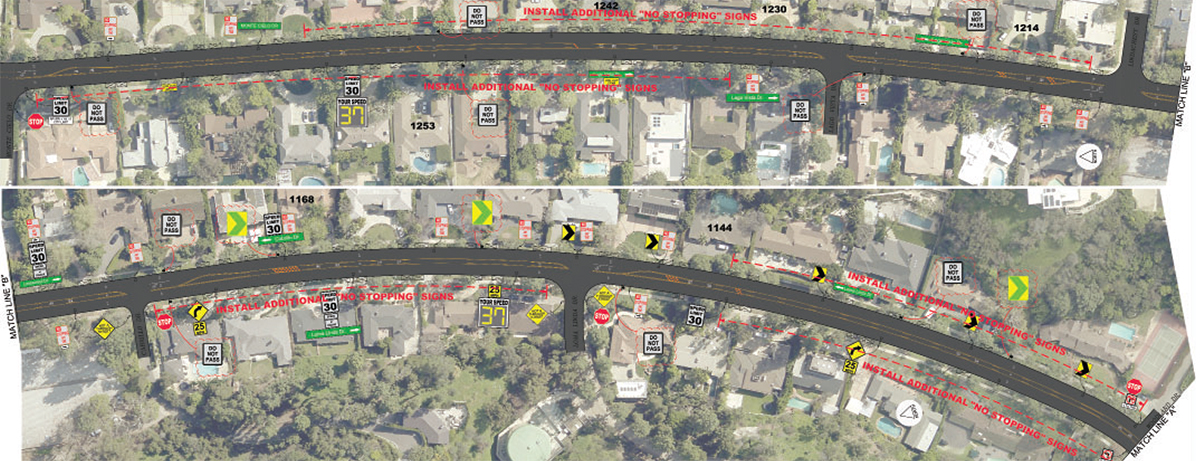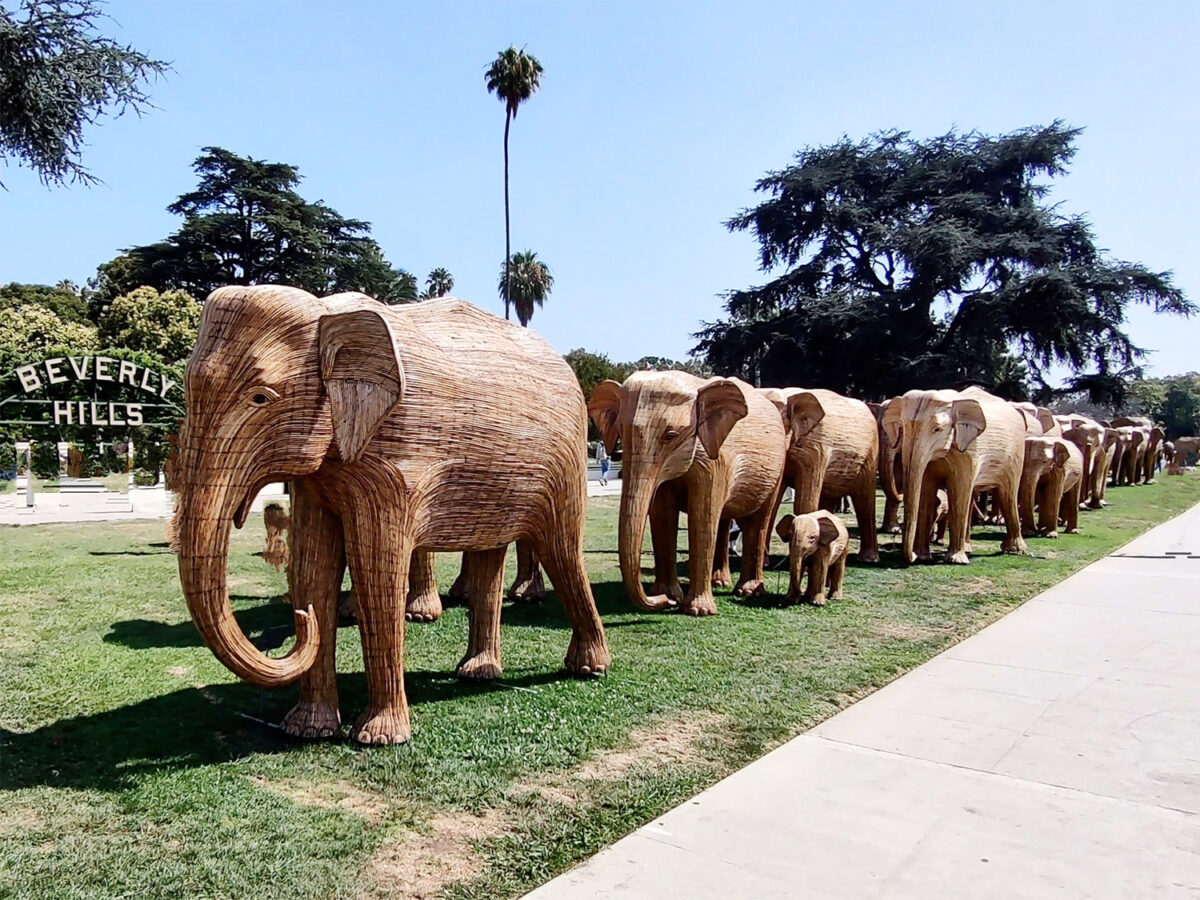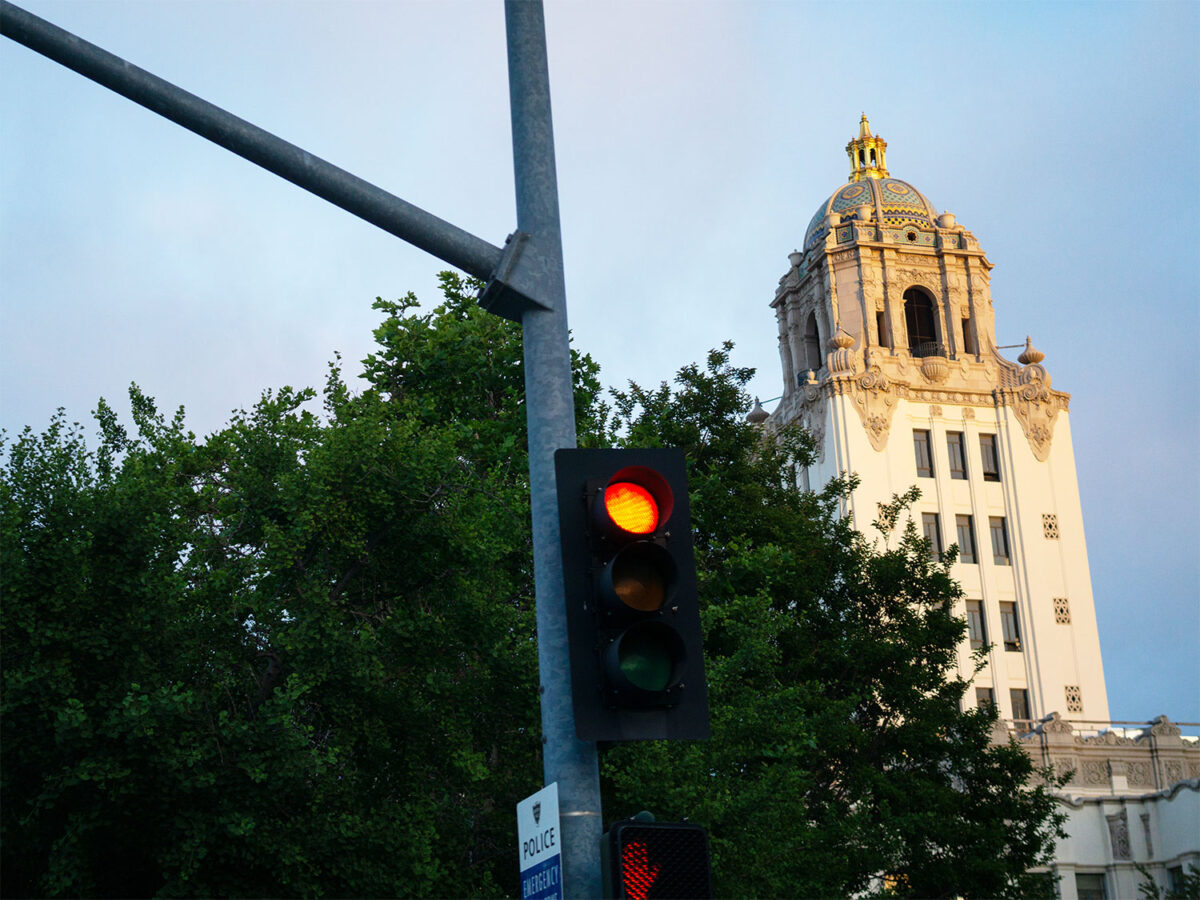In the wake of Beverly Hills Waterline Replacement Project, residents are urging City officials to come up with a solution for the traffic and safety woes plaguing Coldwater Canyon Drive before the street is repaved in 2021.
Roughly 24,000 vehicles traverse the residential thoroughfare connecting the Valley to the Westside every day Monday through Friday, creating a host of safety concerns for the hundreds of residents living along the one-mile stretch through Beverly Hills between Beverly Drive and Monte Cielo Drive. When not mired in traffic congestion along the 10.3-mile route connecting North Beverly Drive to the San Fernando Valley, cars frequently travel the windy two-lane road in excess of the 30-mile per hour speed limit, often using the center turn lane to illegally pass fellow drivers.
“I feel in Beverly Hills, we have an ethical decision to make. What is the most important for us? Is pass-through traffic and speed and decreased congestion our priority? Or is it going to be safety and the feeling of the community?” queried Commissioner Sharon W. Ignarro at the March 5 meeting of the Traffic and Parking Commission (TPC).
In striving to balance the residential quality of life with the need to allow traffic flow along this major artery, while also allowing emergency access and preserving an evacuation route via Cherokee for the residents of Trousdale, consultants from Crain and Associates presented a bevy of ideas at the recent TPC meeting.
From putting up stop signs and introducing more signal lights (both of which consultants recommended against) to installing more signage and introducing delineators in the center lane to deter motorists from using it outside of making left-hand turns or turning into it from one of the 105 resident driveways, commissioners considered a multiplicity of ideas on how best to improve safety.
Other ideas considered, but also recommended against by the consultants, included installing road bumps, reflectors on trees and rumble strips across the entire roadway.
The City is now committed to replacing signs that aren’t reflective or the right size within the next 30 days, in addition to moving forward with installing delineators as a test at five locations in the center median to deter vehicle passing.
“The reason we’re sitting here is because people are not abiding by existing laws. People are passing. People are speeding,” Vice Chair Nooshin Meshkaty said during the three-hour TPC meeting. “There are people that break rules, everyday. But for us to implement measures depending on whether there are going to be a handful of people breaking rules or not, that’s not something I can [support] our consultants as a way of finding solutions.”
The Commission underscored the importance of piloting additional short-term infrastructure improvements in anticipation of implementing a comprehensive plan in tandem with moving forward with the water main replacement project.
Following water line replacements of aging water distribution mains from six to 14 inches in diameter made on San Isidro Drive and Loma Vista Drive, in a few months the City is anticipated to begin the process of replacing 7,300 feet of water main on Coldwater Canyon Drive (from Beverly Drive to the City limit), which will involve significant reconstruction of the roadway.
“That will be a good time to start fresh,” opined Deputy Director of Transportation Aaron Kunz.
Already, enhanced enforcement by Beverly Hills Police starting at the end of last year seems to be helping, with a significant increase in the number of ticketed speeding violations.
“I notice a difference in terms of traffic speed when I drive up and down Coldwater,” said resident Anne Ostroff, who has twice been rear-ended on Coldwater Canyon Drive.
With plans afoot for the Beverly Hills courthouse to once again consider traffic violations, insiders predict that the number of traffic tickets given will increase even more as police officers will no longer need to travel across town for court appearances.
However, while increased police presence in tandem with more signage may help to reduce speed, residents voiced concern that the traffic causes them constant difficulty when leaving their homes and genuine fear about crossing the street on foot. California Vehicle Code does not prohibit pedestrians from crossing Coldwater Canyon Drive as long as they cross with due regard for their safety.
Resident Ellie Yadegar emphasized the peril of actually crossing the street, sharing how the previous week a neighbor’s dog got out and it took her five minutes to simply cross the road to retrieve the dog with her “praying the dog didn’t run out into the road” the entire time. That same week she noted how two cars were involved in an accident and three weeks ago a car crashed into a tree outside her neighbor’s house. Another neighbor’s two dogs were killed after being hit by a car, she said.
“I’m scared I’m going to get hit by a car,” she said. “This is a residential street and what I’m afraid of is that Craine and Associates kind of don’t understand what our problem is. We live on that street and we don’t feel safe walking our kids down that street.”
In addition to highlighting that children don’t feel safe even walking on the sidewalks, Resident Navid Yadegar underscored the daily problem he faces when leaving his home.
“It’s a significant undertaking to get my car onto Coldwater,” he said. “When you’re trying to come out of your driveway and there’s no break because there are no lights, we can’t come out. And so it takes two minutes, three minutes. Sometimes you have to inch your car forward. Some of the cars will go around you as though you have no right to be alive.”
“We hope that the City and the consultants will get together and come up with a solution where we can live safely, enjoy the neighborhood safely, while the City can balance out the safety features being identified by the Police Department and the Fire Department and everybody can coexist together,” he added.
Orly Shabboui, who echoed the concerns voiced by her neighbors, identified her residence as the site where a motorist crashed into the tree out front.
“I have two kids (a 3-year-old and a 5-year-old)…and we bought here to be near the park,” she said. “But I wouldn’t dare to walk to it.”
Given that the preponderance of collisions often are unreported to BHPD, the number of traffic accidents in the Beverly Hills along that stretch of Coldwater Canyon Road, which is reported to be roughly 20 in the past decade, is likely significantly higher.
Shabboui, like her other neighbors, advocated the installation of stop signs and cross walks in order to create more protective crossing opportunities for pedestrians, in addition to slowing down speeding drivers and creating breaks to allow her to turn onto Coldwater from her driveway. Currently she estimated that it can take her five minutes to make the turn safely.
In addition to widening that center lane to at least seven feet (residents suggested 10 feet), consultants presented the Commission with the possibility of alternatively removing the center lane and creating two lanes of dedicated parking on both sides of the street. Curb to curb the roadway is 40-feet wide with a six-to-6.5-foot-wide center lane, which is considered a sub-standard width for a two-way left turn lane.
While failing to suggest an option that would include parking on just one side of the street, the consultants recommended against creating two lanes of parking, given that motorists would be encouraged to illegally make use of those lanes to drive. Further, if a car were parked beside where a motorist had stopped to make a left-hand turn, it could quickly create a traffic jam.
“Within a minute the queue could extend 500, 600 feet,” predicated Craine consultant Diane Skidmore. “Another issue is … it would sort of be promoting illegal behavior.”
Skidmore emphasized that currently, however, the center lane does not adequately protect vehicles waiting to make a turn.
During a Jan. 21 meeting of the TPC, several residents suggested removal of the center lane and the addition of parking on both sides of the roadway with the expectation that passing in the center lane would be eliminated and parked cars curbside would slow traffic. However, representatives from both Beverly Hills Police and Fire advocated keeping the center lane. Other ideas generated from the initial discussion included adding flexible delineators in the center median, traffic signals, speed tables and additional signage.
Resident Peter Ostroff, currently Vice Chair of the Planning Commission, questioned whether consultants were actually even necessary to help the City create an effective solution to the problem. He noted that the two measures set to imminently be implemented, namely putting in delineators and prominent “No Passing” signs, did not emerge from consultant recommendations.
“What we need is not just a bunch of reasons why we can’t do things,” he said. “We need to have some things that we can do.”
Like Ostroff, TPC commissioners advocated piloting various possibilities in anticipation of the impeding major construction.
“We do have a chance to run an experiment,” emphasized TPC Chair David Seidel, noting that they were likely to have just a “few months” to conduct those experiments. “I’d like to look at something now to be able to put in place.”
All TPC commissioners expressed support for adding the delineators and additional signage.
The City currently plans to refresh lane markings and add yellow reflective pavement markers, in addition to replacing and adding (where appropriate) “No Parking” and “No Stopping” signs and installing additional speed limit signs and “chevron alignment” signs to provide additional guidance to drivers approaching the curves, with work slated to be completed by the end of this summer.
“I do know that people need a safe haven to get into their homes. People need a safe haven to get out of their homes. So the protections as much as we can implement them, we should be implementing them,” said Commissioner Jake Manaster. “I’m sorry that the bucolic nature of Beverly Hills has changed dramatically over the decades and this is one example of a particularly out of control situation.”
Other options to pilot, such as adding traffic lights or rumble strips, were estimated to take more time, given the amount of citizen input required.
Residents are currently invited to share their thoughts with the City by emailing Askpw@beverlyhills.org in anticipation of the formulation of a more action-oriented strategy proceeding. Depending on what staff decides, the TPC may once again review recommendations; otherwise, the issue will proceed directly to City Council for deliberation.







